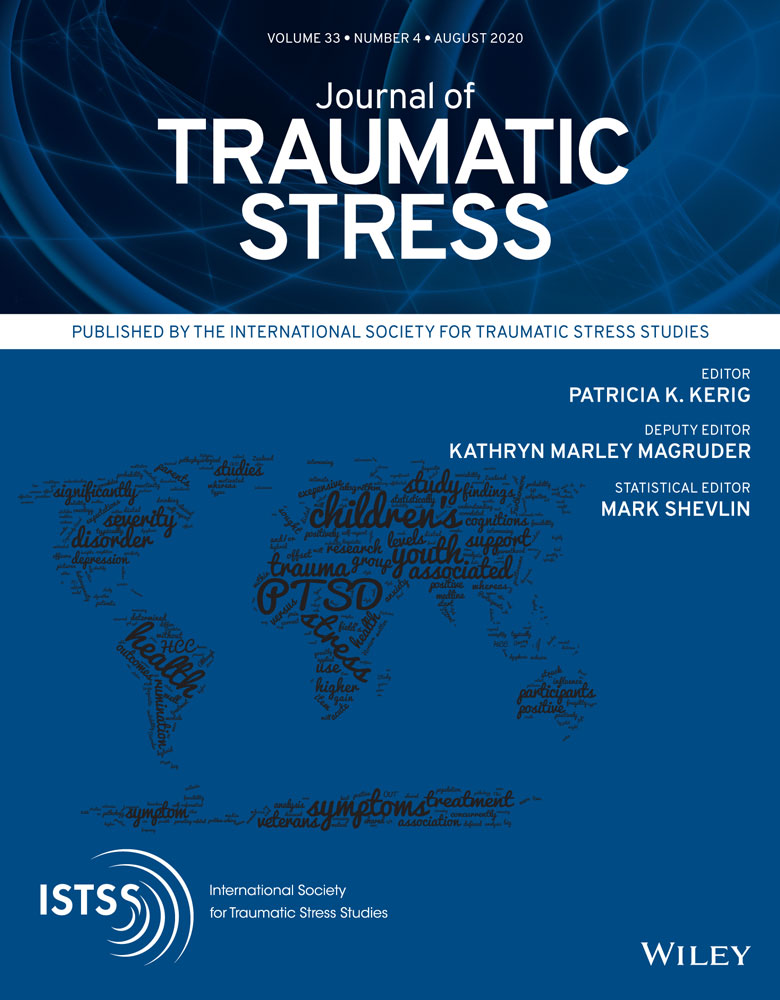Delivering Prolonged Exposure Therapy via Videoconferencing During the COVID-19 Pandemic: An Overview of the Research and Special Considerations for Providers
Abstract
enLeveraging technology to provide evidence-based therapy for posttraumatic stress disorder (PTSD), such as prolonged exposure (PE), during the COVID-19 pandemic helps ensure continued access to first-line PTSD treatment. Clinical video teleconferencing (CVT) technology can be used to effectively deliver PE while reducing the risk of COVID-19 exposure during the pandemic for both providers and patients. However, provider knowledge, experience, and comfort level with delivering mental health care services, such as PE, via CVT is critical to ensure a smooth, safe, and effective transition to virtual care. Further, some of the limitations associated with the pandemic, including stay-at-home orders and physical distancing, require that providers become adept at applying principles of exposure therapy with more flexibility and creativity, such as when assigning in vivo exposures. The present paper provides the rationale and guidelines for implementing PE via CVT during COVID-19 and includes practical suggestions and clinical recommendations.
Resumen
esSpanish Abstracts by Asociación Chilena de Estrés Traumático (ACET)
Realizando Terapia de Exposición Prolongada a través de Videoconferencia Durante la Pandemia de COVID-19: Descripción General de la Investigación y Consideraciones Especiales para Proveedores
TERAPIA DE EXPOSICIÓN PROLONGADA DURANTE EL COVID-19
Aprovechar la tecnología para proporcionar terapia basada en evidencia para el trastorno de estrés postraumático (TEPT), como la exposición prolongada (EP), durante la pandemia de COVID-19 ayuda a garantizar el acceso continuo al tratamiento de primera línea para el TEPT. La tecnología de video teleconferencia clínica (CVT en su sigla en inglés) se puede utilizar para administrar la EP de manera efectiva mientras se reduce el riesgo de exposición al COVID-19 durante la pandemia tanto para los proveedores como para los pacientes. Sin embargo, el conocimiento, la experiencia y el nivel de comodidad del proveedor con la prestación de servicios de atención de salud mental, como la EP, a través de CVT son fundamentales para garantizar una transición sin problemas, segura y efectiva a la atención virtual. Además, algunas de las limitaciones asociadas con la pandemia, incluidas las órdenes de quedarse en casa y el distanciamiento físico, requieren que los proveedores se vuelvan expertos en aplicar los principios de la terapia de exposición con más flexibilidad y creatividad, como cuando se asignan exposiciones in vivo. El presente artículo proporciona la justificación y las pautas para implementar la EP a través de CVT durante el COVID-19 e incluye sugerencias prácticas y recomendaciones clínicas.
抽象
zhDelivering Prolonged Exposure Therapy via Videoconferencing During the COVID-19 Pandemic: An Overview of the Research and Special Considerations for Providers
Abstract
Leveraging technology to provide evidence-based therapy for posttraumatic stress disorder (PTSD), such as prolonged exposure (PE), during the COVID-19 pandemic helps ensure continued access to first-line PTSD treatment. Clinical video teleconferencing (CVT) technology can be used to effectively deliver PE while reducing the risk of COVID-19 exposure during the pandemic for both providers and patients. However, provider knowledge, experience, and comfort level with delivering mental health care services, such as PE, via CVT is critical to ensure a smooth, safe, and effective transition to virtual care. Further, some of the limitations associated with the pandemic, including stay-at-home orders and physical distancing, require that providers become adept at applying principles of exposure therapy with more flexibility and creativity, such as when assigning in vivo exposures. The present paper provides the rationale and guidelines for implementing PE via CVT during COVID-19 and includes practical suggestions and clinical recommendations.
在新冠肺炎(COVID-19)大流行期間通過視像會議提供長期暴露療法:研究概述和對提供者的特殊考慮
摘要
在新冠肺炎疫症大流行期間, 利用技術為創傷後壓力症(PTSD)提供循證治療, 如長期暴露療法(PE), 有助於確保持續獲得一線治療。臨床視像會議(CVT)技術可用於有效地提供長期暴露療法, 同時降低治療提供者和患者在疫症期間接觸新冠肺炎的感染風險。不過, 提供者的知識、經驗和對通過CVT提供心理健康護理服務(如長期暴露療法)的舒適程度, 是確保順利、安全和有效地過渡到虛擬護理的重要因素。另外, 與新冠肺炎疫症相關的一些限制措施, 包括居家令以及與他人保持距離, 要求提供者以更靈活、更創意的方式運用暴露療法, 例如在分配實境暴露時。本文提供了在新冠肺炎疫症期間通過臨床視像會議實施暴露療法的理論依據及指導, 包括實用與臨床建議。




